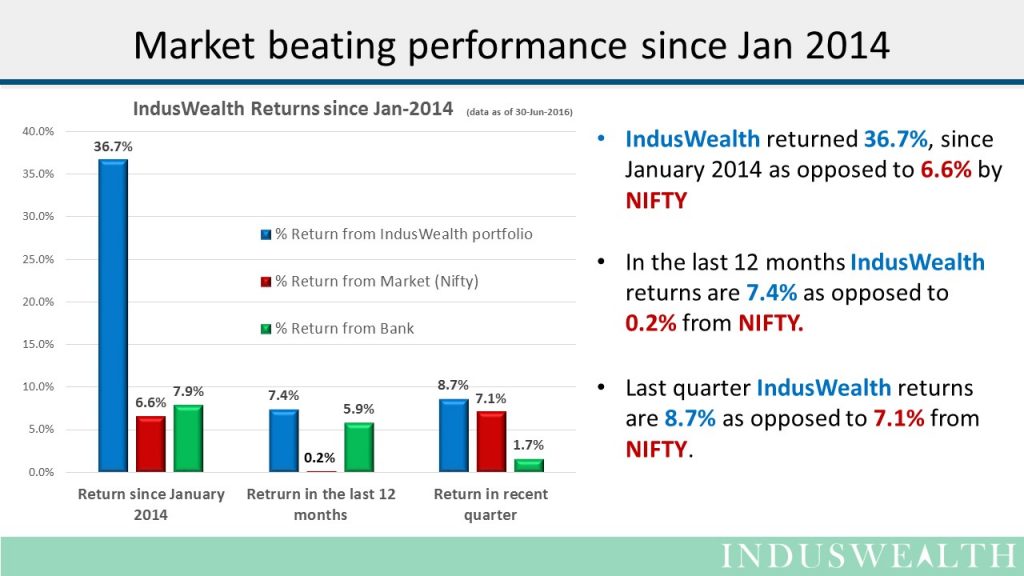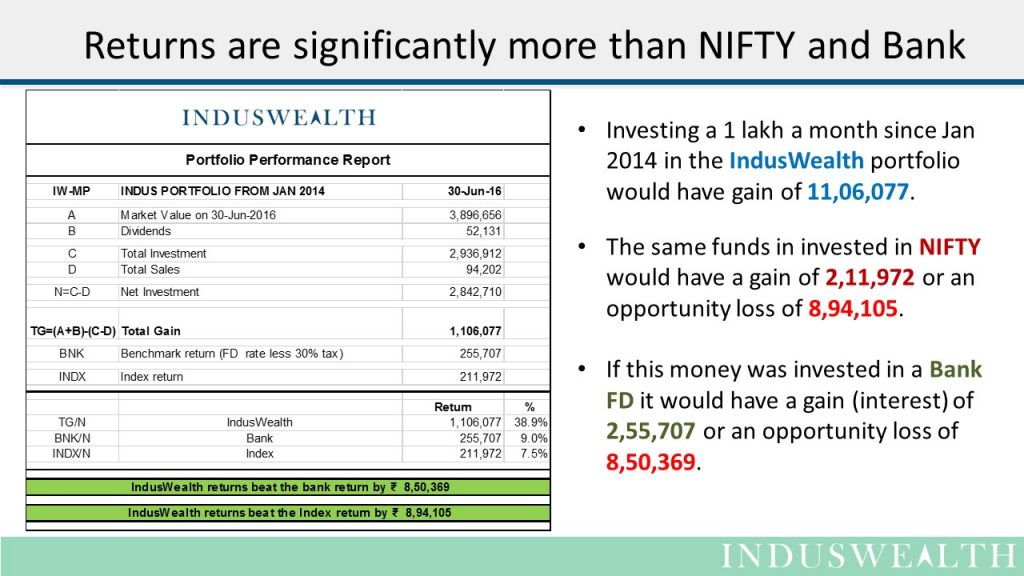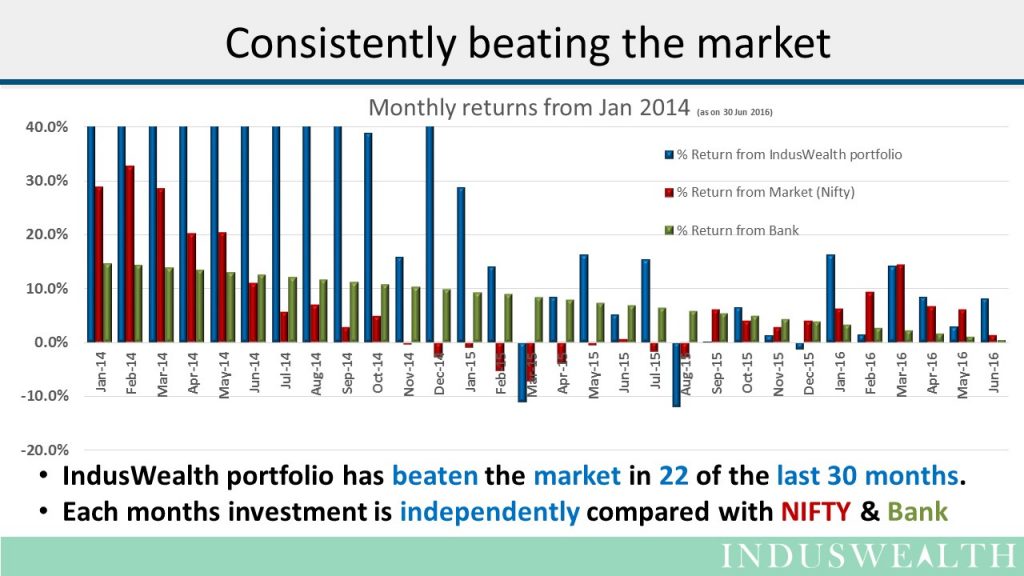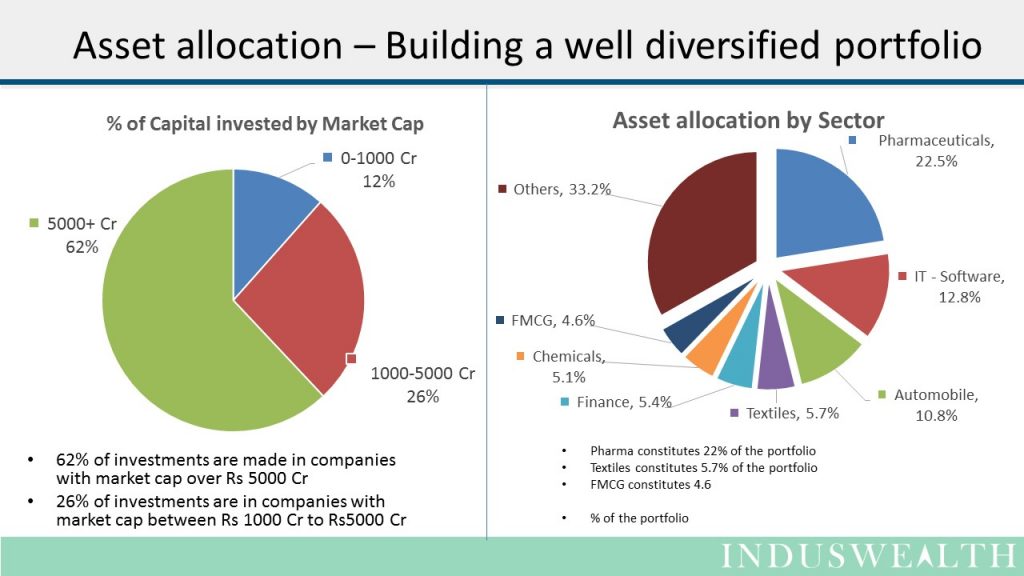As we end the quarter April -June 2016, we are happy to share the results of IndusWealth model portfolio.
Results for IndusWealth can be downloaded from the links below:
- Summary of the returns
- Portfolio performance summary
- Benchmark retrun calculations
- Transactions in the model portfolio
- Stock wise returns for the model portfolio
Market Outlook
It’s been an eventful quarter, “Brexit” & “Rexit” have both happened. There is a lot of “sky is falling” kind of sentiment. I am not suggesting that these events are not significant, just stating that when we look back at these events 10 years from now, I am sure, our perspective will be different. I also believe that businesses and societies will adapt to new realities and this will become the new normal soon.
Most of the world is clamoring for growth and jobs and there is a certain amount of disappointment with status quo across various countries. Briext, US elections, turmoil in Europe, political noises in India point to this fact.
Let’s look at the historical drivers of growth. There have been 3 key drivers – Population, Productivity and Capital. Historically growth experienced by a society was approximately equal to the population growth + increase in productivity.
Growth in Economy = Population growth + Increase in Productivity
- Increase in population creates more demand and as the economy works to address this, it experiences growth which reflects population growth.
- As technology is deployed it increases productivity and adds to the overall growth.
- Capital is the key ingredient in helping deploy technology for improving productivity.
If we look at the world from this lens
- The developed world is facing a slow growing population and a majority of their growth will be driven by an increase in productivity.
- Increasing productivity usually causes some short term disruptions – as there are fewer people required to do the same job.
- New products and services have to be identified to absorb the people who have been displaced by productivity increases.
- This journey could be difficult as this takes time and effort, and societies going through this journey will feel anxious.
- On the positive side, developed countries have surplus capital that can be deployed to increase productivity and also to invest in opportunities available in developing countries, where it can earn a good return.
- The developing world has different challenges – they have an increasing population, but the productivity of the overall population is low.
- Low productivity is due to shortage of capital and limited investment in human capital.
- For instance, agriculture in India represents 50% of the GDP and has only been growing at 4% per year and it under-employs a vast population.
- This is because of limited deployment of capital in terms of farm equipment, ability to store the produce, and transportation of the produce to markets.
- The level of education and deployment of technology in farming can also be improved by making an investment in training farmers – developing human capital.
Let’s look at opportunities and challenges for India:
Opportunities
- Opening up of FDI in many sectors, signing bilateral treaties for more business, government investments in infrastructure, programs like “Skill India” and “Make in India” – if executed effectively – can bring in capital, build human capital, and help in improving the growth experienced by increasing productivity.
- A lot of state elections are being contested on the promises of delivering growth and jobs. Politicians are astute readers of the aspirations of the people and they are definitely “talking the talk”. To have a chance of reelection, they will have to try and deliver on their promises.
- A good monsoon is predicted and this will definitely help relieve some of the anxiety in the short term.
Challenges:
- Banking system is dealing with NPA’s, Industry balance sheets have too much debt and they are waiting for uptick in the economy before they invest further. A lot of state governments are burdened with significant debt due to populist measures.
- Uncertainty in global markets can impact the rate at which capital will come into the country.
- A lot of the policies need time, continuity, and excellence in execution to deliver – this could be challenge for a country which is continually in an election mode. Social and political pressures can be expected to increase as 1 million jobs a month have to be created to absorb the population coming into the job market and the current growth is nowhere near that.
If we take a 10 year view of the economy, I believe, that some of these challenges will be overcome, we will cash in on some of these opportunities, and we will have a reasonable growth. You may want to read our blog “Sensex in 2025”
Investing is all about having the right process of selection, discipline to execute it, and patience for the results to unfold. Investing is a bet on the power of compounding, where waiting is the key. Watching ones investments is like watching grass grow – one who is watching it continuously is bound to feel anxious, but a sporadic watcher will always be surprised by how much it grows in a short time.
We believe that India offers interesting investment opportunities for the long term investor.
Happy investing….



